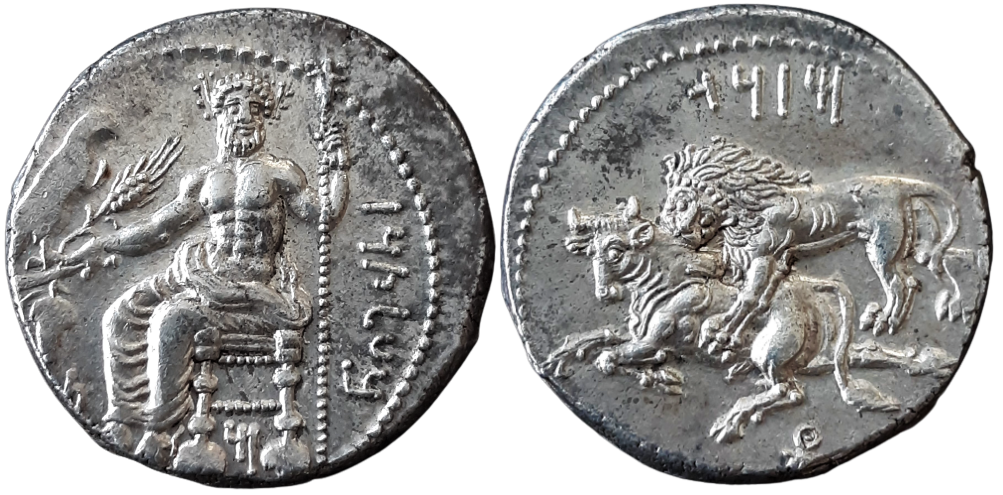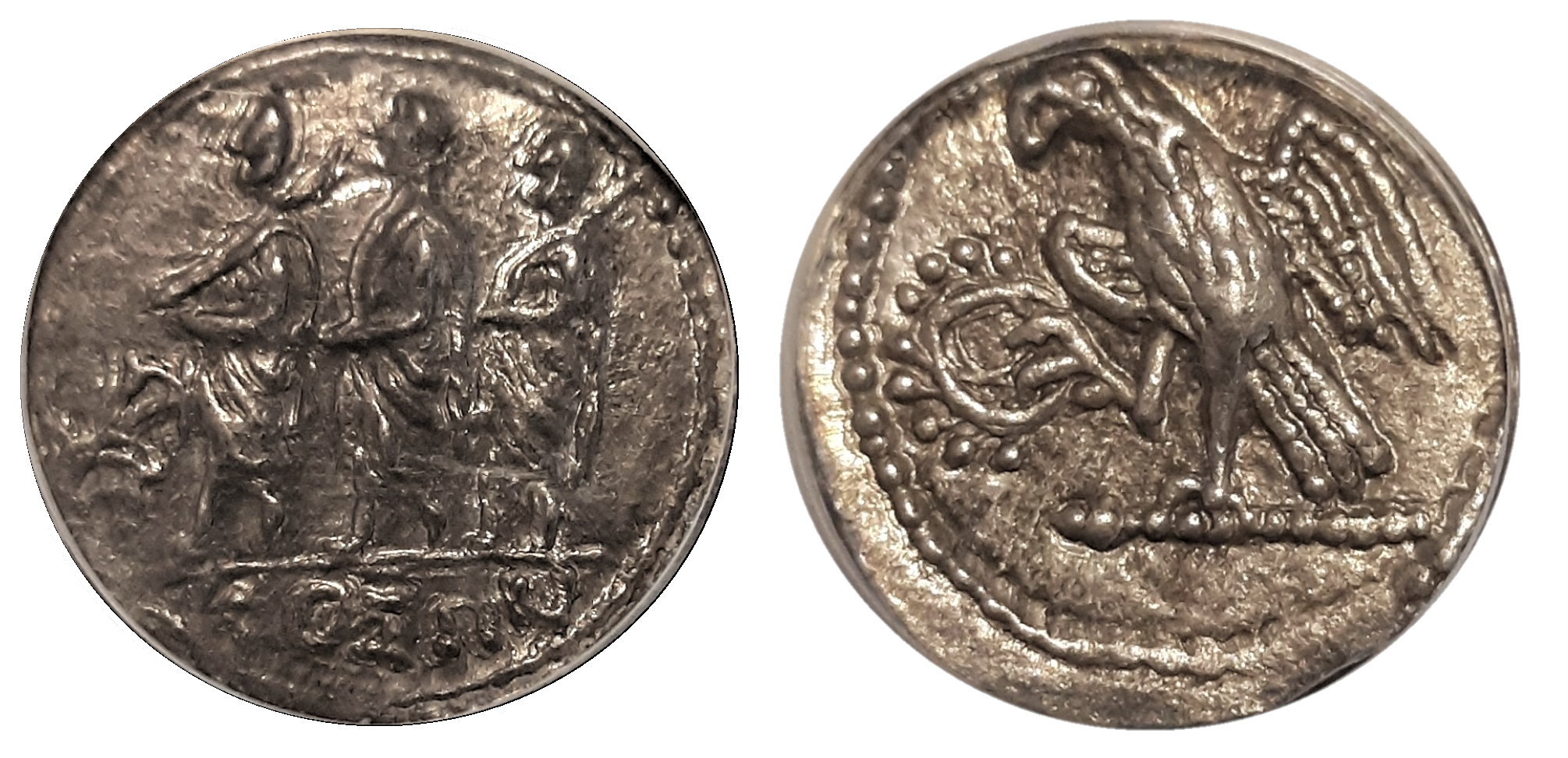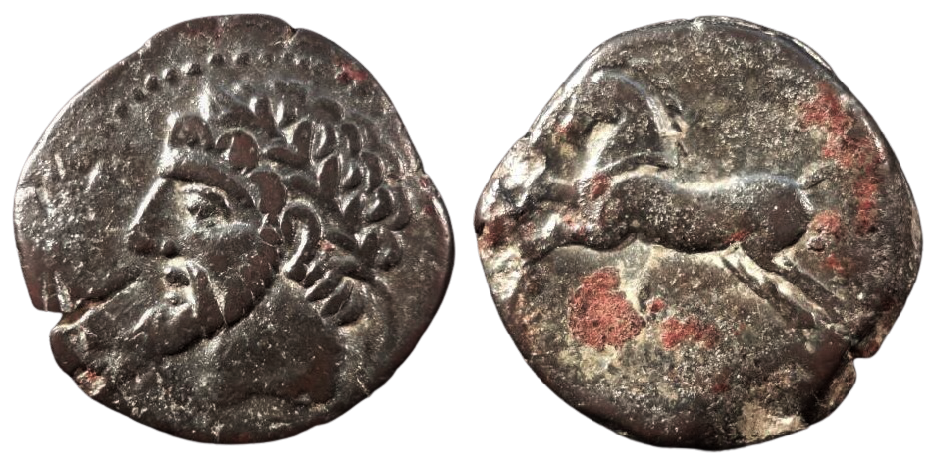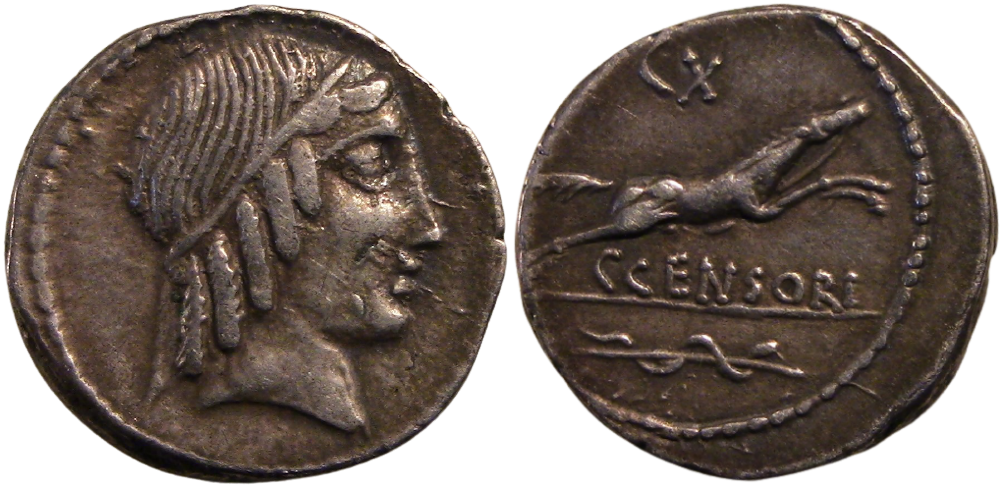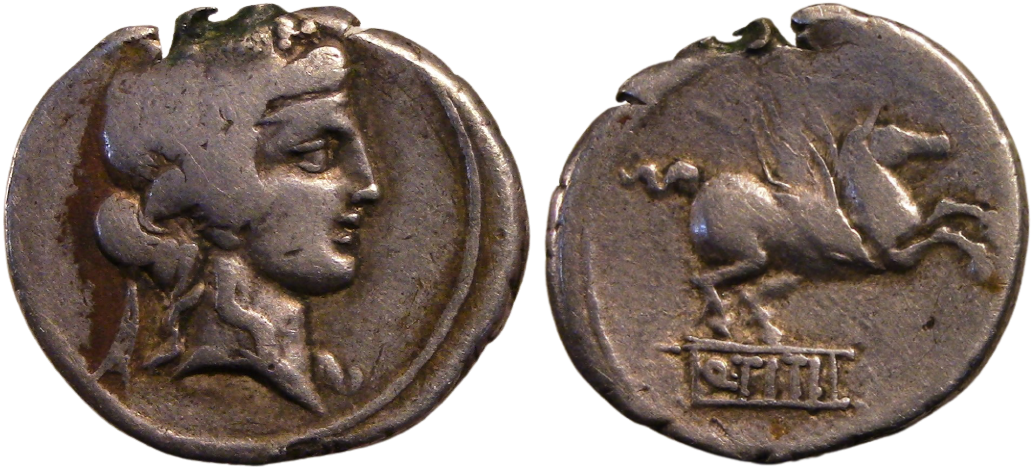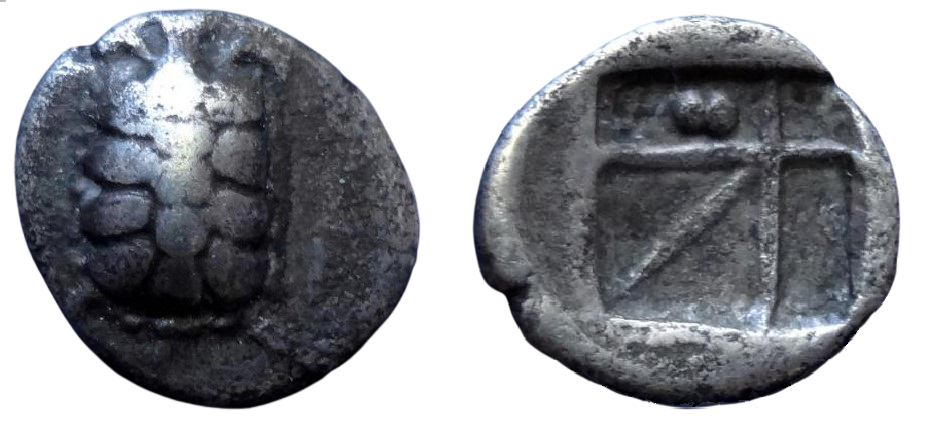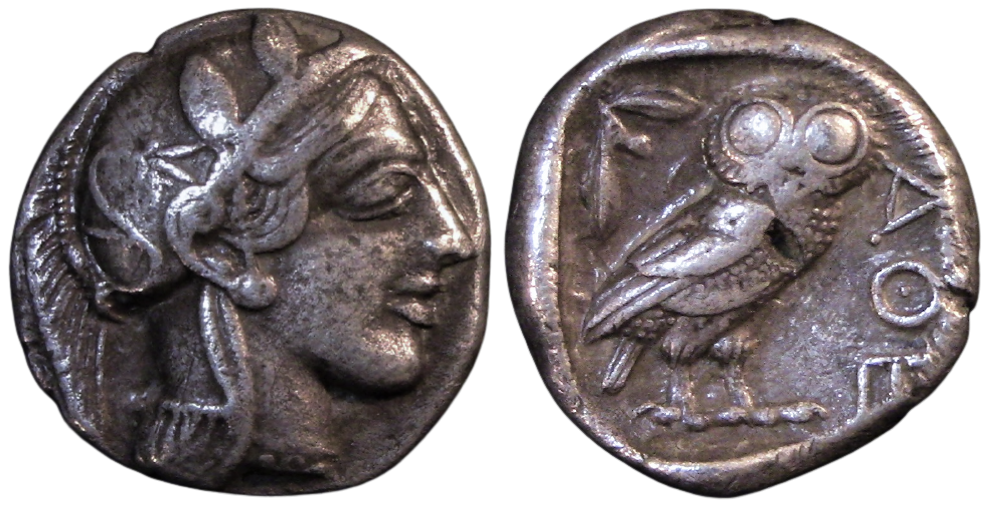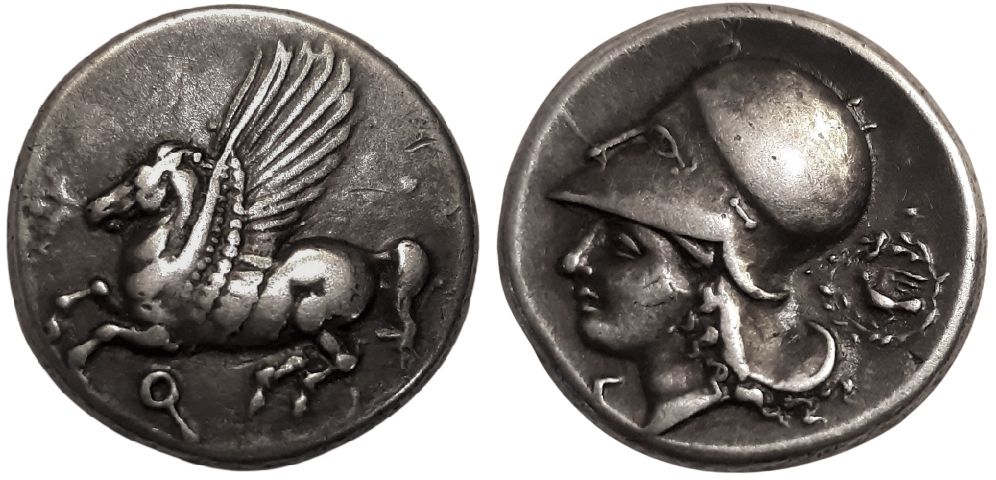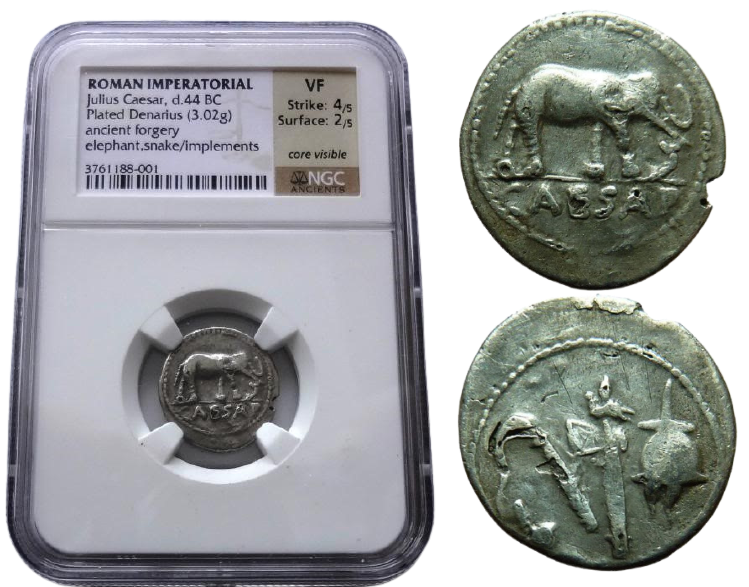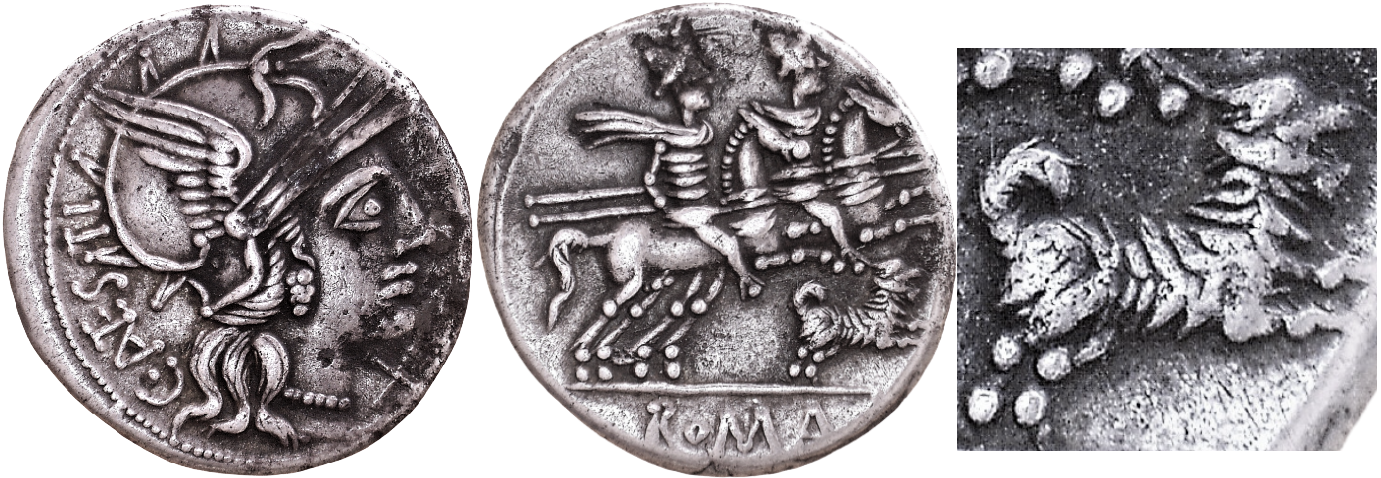
Roman Republic. C. Antestius AR Denarius (3.81g, 19mm). Rome Mint, BCE 146.
Obv: C•ANTESTI (ANTE ligate) to l. Head of Roma right, X below chin.
Rev: ROMA in exergue. The Dioscuri, each holding spear, riding right; dog running right, both fore-feet raised, below horses.
Ref: Antestia 1; Crawford 219/1e; BMCRR Rome 859.
Provenance: Ex-Artemide Aste srl e-Auction 11, Lot 236 (San Marino, 26 January 2020).
Numis. Notes: Spots of porosity/roughness, but overall good metal. A lively hound enjoying the hunt!
Hist. Notes: Although hounds were popular on Greek coinage as well, Roman Republican denarii provide much more varied depictions of the breeds and contexts of dogs in their society. This issue from Moneyer C. Antestius is notable for illustrating what today might be described as a “lion cut,” popular for poodles and other water dogs. The dog itself (or puppy?) is sometimes identified as a proto-poodle or water spaniel of some sort – a working dog. The “lion cut” is meant to permit buoyancy and warmth as the dog retrieved fowl from water. A similar breed may be portrayed on the denarius of L. Caesius, but in a distinctly domestic setting, hinting that, already in antiquity, canine coiffure may have been as much about fashion as function.
Album: All Coins
Categories: Roman Coins
Tags:

